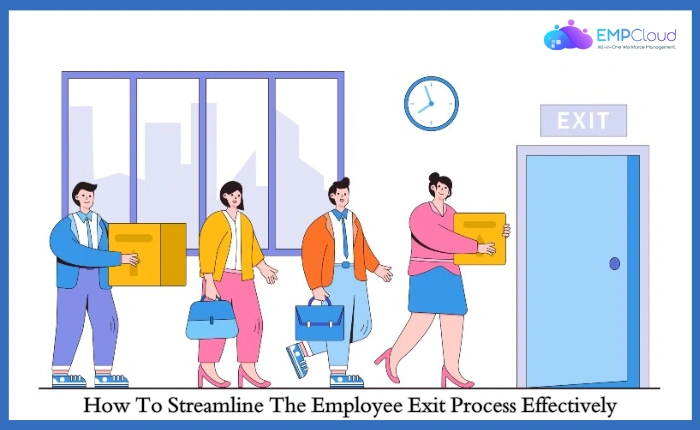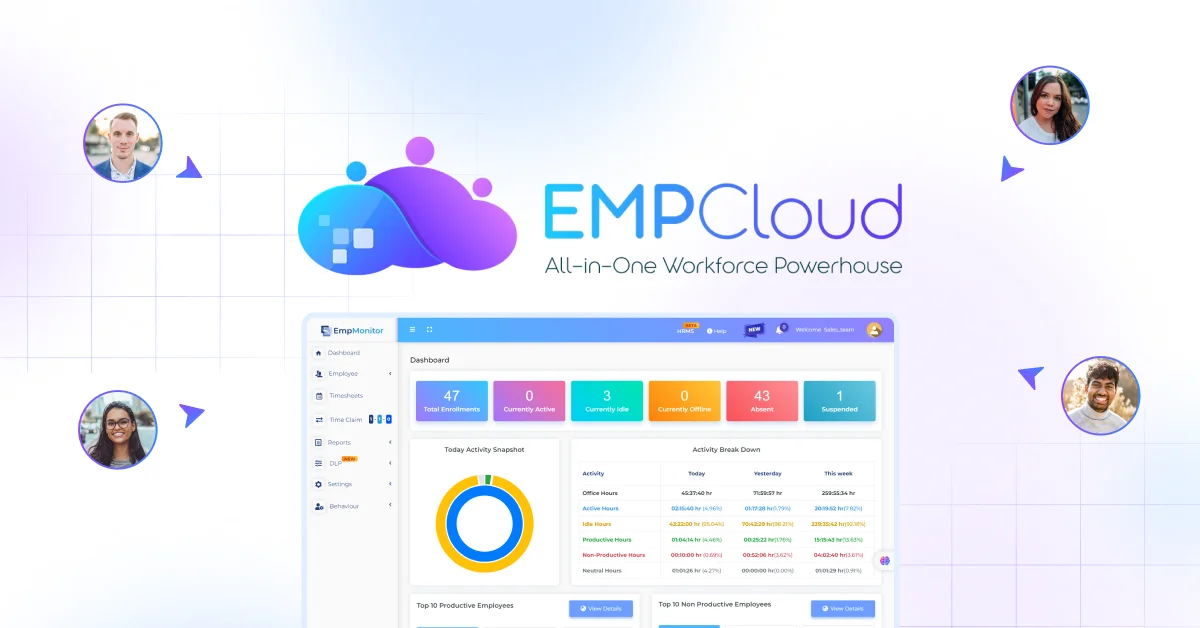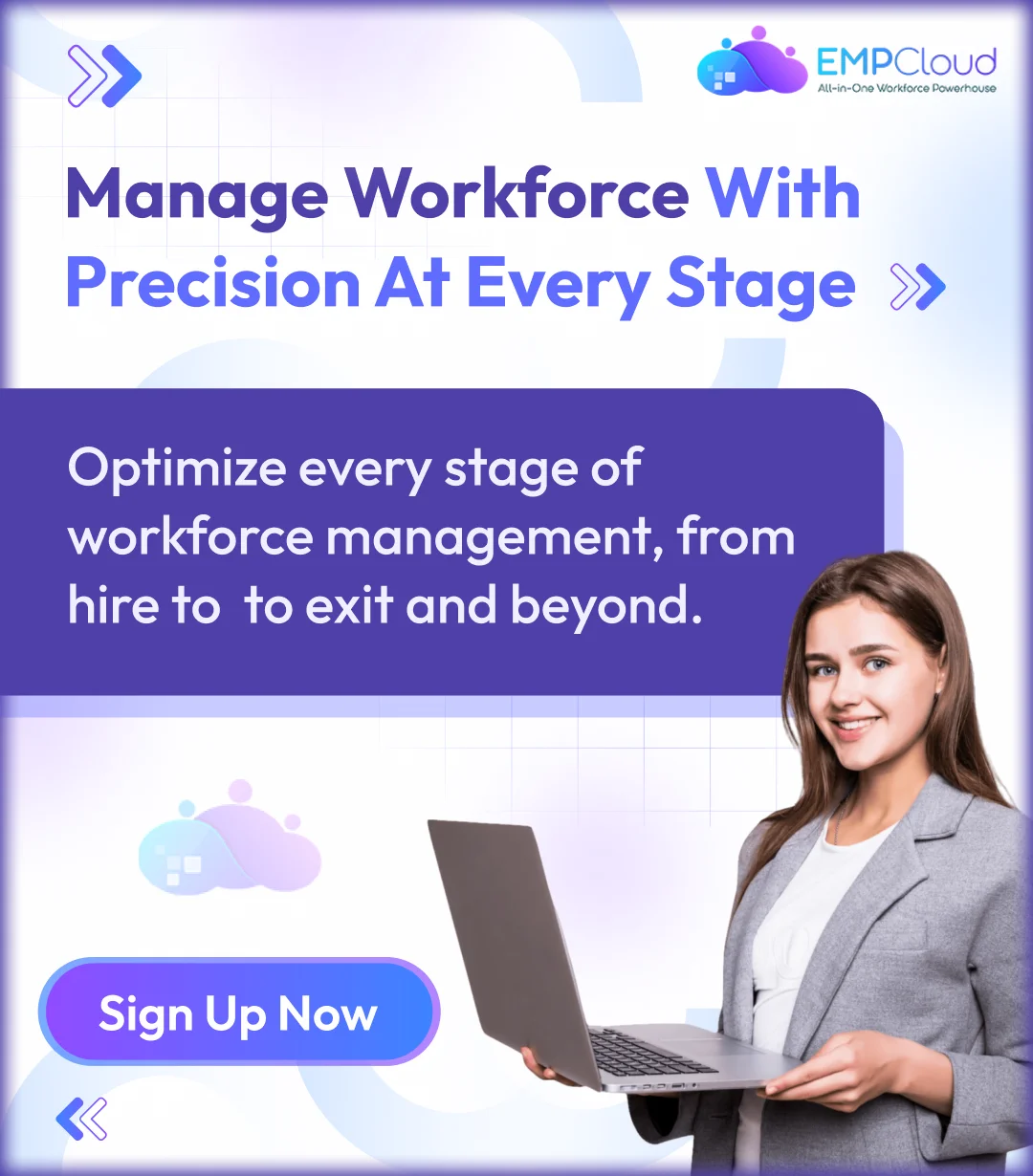
The employee exit process is not just an administrative task, it’s a strategic opportunity. From compliance to culture, every detail matters. A well-designed process safeguards the organization, creates positive alumni, and upholds the employer brand. By using checklists, policies, and empathetic practices, companies can turn departures into dignified transitions. After all, how an employee exits says as much about an organization as how they are welcomed in.
But how can businesses effectively manage this crucial stage? Let’s explore.
In a hurry? Listen to the blog instead!
What Are The Goals Of An Employee Exit Process?
The employee exit process is more than just completing paperwork, it plays a vital role in ensuring continuity, compliance, and a positive organizational culture. A well-structured process focuses on multiple goals that benefit both the departing employee and the organization:
Knowledge Transfer:
One of the primary goals is to make sure an employee’s responsibilities don’t fall through the cracks. This involves proper handover of ongoing projects, client communications, and documentation. Structured knowledge transfer sessions or shadowing opportunities help remaining employees step into new roles smoothly.
Compliance:
The exit process ensures that all statutory requirements are followed, including labor laws, benefits disbursement, final settlement, and company-specific policies. Meeting compliance standards protects the organization from legal risks and maintains fairness for the departing employee.
Employee Satisfaction:
A respectful and professional offboarding experience leaves a lasting impression. Exit interviews, timely settlements, and clear communication make employees feel valued, even at the end of their journey. This not only improves alumni relationships but also strengthens the employer brand.
Data Security:
Protecting sensitive data is a crucial part of the process. The exit procedure involves revoking access to company systems, retrieving devices, and ensuring confidential files remain secure. This safeguards intellectual property and minimizes risks of data breaches.
Professional Growth:
Exits provide valuable insights into team dynamics. Identifying workload gaps or missing skills during this transition helps organizations plan reskilling or training programs for current staff. This strengthens long-term workforce planning and supports employee development.
Why Is The Employee Exit Process Important?
Employees leaving an organization is inevitable. But the way they leave impacts morale, productivity, and your company’s reputation. A structured employee exit process:
- Ensures knowledge transfer and prevents operational gaps
- Maintains legal compliance and protects sensitive data
- Leaves a positive impression that strengthens your employer brand
- Provides valuable feedback through exit interviews
Ultimately, a well-structured exit process for employees transforms departures into opportunities to reinforce trust, professionalism, and positive relationships.
What Are The Key Stages Of The Employee Exit Process?
Breaking the employee offboarding process into clear stages ensures consistency, compliance, and a respectful transition for employees.
Resignation or Termination Handling:
The process begins when an employee submits a resignation or receives a termination notice. At this stage, clear acknowledgment and communication are essential. Setting expectations and timelines helps both the organization and the employee prepare for the next steps smoothly.
Documentation and Acceptance:
HR takes care of the formalities, including acknowledgment letters, legal paperwork, and final settlement agreements. Proper documentation ensures compliance with labor laws and offers transparency, which builds trust in the process.
Knowledge and Responsibility Transfer:
A critical stage of offboarding is ensuring knowledge transfer. Departing employees should hand over projects, document procedures, and train successors if needed. This reduces disruptions, maintains operational flow, and protects institutional knowledge.
Exit Interviews and Feedback:
Exit interviews are valuable tools for gathering feedback about workplace culture, management practices, and policies. Departing employees often provide candid insights that can highlight improvement areas and help boost retention for current staff.
Clearance and Final Settlements:
Before the final working day, the employee must return all company property, such as laptops, access cards, or tools. At the same time, payroll teams should settle outstanding salary, bonuses, reimbursements, or benefits to ensure a clean financial closure.
Farewell and Relationship Building:
A professional farewell, whether a small gathering, thank-you note, or appreciation gesture, helps maintain positive alumni relations. Using an employee onboarding and offboarding checklist ensures every stage of the exit is respected and nothing important is overlooked.
Also Read:
Employee Offboarding: A Complete Guide To A Smooth Workforce Transition
What Challenges Do Organizations Face During The Exit Process?
Even with a structured plan, organizations may face obstacles that complicate the employee exit process.
Inconsistent Procedures:
Without standardized policies, exit practices can vary between departments, leading to confusion and compliance risks.
Data Security Risks:
Delays in revoking access or collecting company devices may expose sensitive data, creating legal and reputational issues.
Incomplete Knowledge Handover:
Rushed or missing handovers can disrupt ongoing projects and reduce team efficiency.
Employee Emotions:
If exits are managed poorly, such as delayed settlements or lack of communication, resentment may arise, affecting both morale and employer branding.
Proactively tackling these issues ensures smoother transitions and safeguards organizational credibility.
How Can Companies Make The Exit Process Smooth?
Effective offboarding requires a careful balance between compliance, operational efficiency, and empathy. Companies that follow structured practices can ensure smooth transitions while maintaining a positive employer brand.
Standardized Procedures:
Implementing a clear, step-by-step offboarding guide ensures consistency across departments. This includes formal resignation acknowledgment, asset collection, knowledge transfer, and final settlements.
Standardization reduces errors and provides a predictable experience for departing employees.
Transparency:
Open communication is key. Clearly share timelines, responsibilities, and company policies related to the exit. Keeping employees informed about each step of the process minimizes confusion and builds trust.
Security Measures:
Protecting company data is critical. Revoke system access, collect company devices, and secure sensitive information promptly. At the same time, handle these measures respectfully to avoid creating a sense of distrust.
Actionable Feedback:
Exit interviews are valuable sources of insight. Collect feedback on management, workplace culture, and processes, then analyze it to make improvements that benefit current and future employees.
Recognizing Contributions:
Departing employees should feel valued for their contributions. Celebrating achievements through a small farewell, acknowledgment email, or recognition ceremony leaves a positive impression and strengthens alumni relations.
By combining clear procedures, respectful communication, and recognition, companies can make the employee exit process process seamless, professional, and ensure timely full and final settlement for every departing employee.
How Does A Checklist Help In Employee Exit?
Checklists simplify the employee exit process and prevent missed steps. Key components include:
- Resignation acknowledgment
- Knowledge transfer plan
- Asset return (laptops, ID cards)
- Payroll and benefits settlement
- Exit interview scheduling
- Farewell communication
A structured approach also aligns with tools like an employee departure checklist or an offboarding checklist template.
Also Read:
Full And Final Settlement: Everything You Must Know In 2025
How Can Technology Enhance The Exit Process?
Technology is transforming workforce management and offboarding. Tools like EmpCloud integrate multiple features that make the employee exit process more organized, efficient, and employee-friendly. But EmpCloud’s capabilities go far beyond offboarding—it supports the entire employee lifecycle, from onboarding to exit.
EmpCloud offers a unified platform that streamlines every stage of an employee’s journey. From smooth onboarding processes and progress assessments to continuous performance improvement, evaluation, and rewards management, the platform covers all critical aspects of workforce management. It also handles key HR responsibilities and attendance tracking in real time, giving managers and HR teams comprehensive oversight of employee performance, project involvement, and daily attendance.
By centralizing these functions into one easy-to-use system, EmpCloud helps organizations foster professional growth, maintain compliance, and improve operational efficiency throughout the employee lifecycle—making workforce management not only simpler but more strategic and effective from the moment someone joins to their final day.
By leveraging EmpCloud, companies benefit from:
- Automated workflows that ensure a smooth and efficient offboarding process, including task checklists to complete exit formalities and document handovers.
- Centralized dashboards provide real-time visibility into employee performance and attendance, helping identify any outstanding tasks or issues before exit.
- Timely access revocation across systems and secure data management to protect sensitive company information during and after employee departure.
- Exit management tools capture valuable feedback to improve retention and workplace culture.
- Seamless transition planning with knowledge transfer tracking and project reassignment features to minimize disruption.
- Actionable insights that support professional development and optimize workload distribution across teams, ensuring teams remain balanced following employee exits.
What Is EmpCloud And How Does It Improve Workforce Management?
EmpCloud is a comprehensive platform designed to manage the entire employee lifecycle, including exit management, onboarding, productivity, and HR compliance.
How Does EmpCloud Help Managers?
- Time Tracking: Monitor work hours and employee activities accurately.
- Geo-Location Tracking: Track field teams for operational efficiency.
- Task & Opportunity Management: Assign tasks and track real-time progress.
- Client Management: Maintain client information and interactions to improve service.
- Productivity & Project Management: Gain insights to optimize performance and ensure project delivery.
- Data Security & Reporting: Protect sensitive information and access in-depth analytics for decisions.
How Does EmpCloud Help HR Teams?
- Face Recognition Attendance: Secure, contactless attendance.
- Leave & Attendance Tracking: Simplify leave management and scheduling.
- Policy & Document Management: Upload and manage policies efficiently.
- Automated Timesheets & Employee Access History: Optimize scheduling and track employee access.
- Employee Requests & Payroll Management: Streamline requests and automate payroll.
- Exit Management: Organize offboarding processes and documentation efficiently.
What Are the Benefits of Using EmpCloud?
- Unified dashboard for all workforce data
- Live location tracking and task allocation
- Enhanced professional growth by monitoring performance gaps and training needs
- Simplified FTE and resource planning
EmpCloud ensures that every step of the employee exit process is seamless, professional, and data-driven.
How Do Employee Exits Affect Organizational Culture?
The way employees leave an organization often reflects its overall culture and values. A respectful employee exit process:
- Reinforces Fairness and Transparency: Clear communication about exit procedures and settlements shows employees they are treated equitably.
- Strengthens Company Reputation: Positive offboarding experiences leave a lasting impression, enhancing how current and future employees perceive the organization.
- Encourages Positive Alumni Relationships and Potential Rehires: Handling exits professionally fosters goodwill, making former employees more likely to refer talent or even return in the future.
By prioritizing fairness, communication, and recognition, organizations can ensure that departures strengthen rather than weaken workplace culture.
How Can Companies Balance Compliance And Employee Experience?
A successful employee exit process requires striking the right balance between regulatory compliance and a positive employee experience. Companies that manage both effectively maintain legal protection while leaving departing employees with a respectful, professional impression.
Timely Settlements and Accurate Paperwork:
Ensuring that final salary, benefits, and reimbursements are calculated and disbursed on time demonstrates fairness and prevents disputes. Proper documentation also keeps the organization compliant with labor laws.
Maintaining Confidentiality and Protecting Company Data:
Revoking system access, securing devices, and safeguarding sensitive information are critical. At the same time, these measures should be handled discreetly to avoid creating distrust.
Conducting Professional Exit Interviews:
Exit interviews provide a platform for employees to share honest feedback. Gathering insights about workplace culture, processes, and management practices helps the organization improve and enhance employee satisfaction.
Recognizing Contributions and Providing Career Support:
Acknowledging an employee’s achievements, offering reference letters, or sharing guidance for future roles leaves a lasting positive impression. This approach strengthens the employer brand and encourages continued goodwill from alumni.
Balancing compliance with empathy ensures that offboarding is both legally sound and employee-centric, fostering trust, professionalism, and a strong organizational reputation.
What Are The Best Practices For A Human-Centric Offboarding?
A human-centric employee exit process focuses on respect, continuity, and long-term relationships, benefiting both the departing employee and the organization.
- Treat Each Employee Departure with Dignity: Respectful communication, acknowledgment of contributions, and professional farewells help employees leave on a positive note, reinforcing goodwill.
- Ensure Knowledge Transfer Without Micromanaging: Encourage departing employees to document processes, train successors, or provide handover notes, while giving them autonomy to manage this efficiently.
- Automate Administrative Tasks: Using digital tools or standardized checklists for exit documentation, asset return, and payroll ensures accuracy, reduces errors, and allows HR to focus on the human aspect of offboarding.
- Maintain Alumni Connections for Future Opportunities: Keeping in touch with former employees through newsletters, networking events, or alumni programs fosters ongoing relationships, potential referrals, and future rehiring opportunities.
Adopting these practices not only strengthens the employer brand but also supports professional growth for remaining employees, ensuring a smooth transition and sustained organizational culture.
Conclusion
The employee exit process is more than an administrative formality, it is a strategic tool that affects culture, compliance, and professional growth. By using checklists, policies, empathetic practices, and technology solutions like EmpCloud, companies can ensure:
- Smooth offboarding
- Positive organizational reputation
- Professional growth for employees
- Accurate FTE and resource management
A well-structured exit process leaves employees with a lasting positive impression while safeguarding organizational efficiency and data.
FAQs
1. How can professional growth be supported even during employee exits?
Ans. Even when an employee leaves, organizations can identify skill gaps and plan training for remaining staff. Proper knowledge transfer and workload distribution ensure professional growth and maintain productivity.
2. What role does FTE play in managing employee exits?
Ans. Understanding full-time equivalents (FTE) helps managers plan workforce capacity during transitions. It ensures there are enough staff to cover duties, preventing disruption when someone leaves.
3. How can knowledge transfer be effectively managed during offboarding?
Ans. Structured handovers, detailed documentation, and shadowing sessions allow departing employees to transfer knowledge efficiently. This reduces operational gaps and maintains team productivity.







